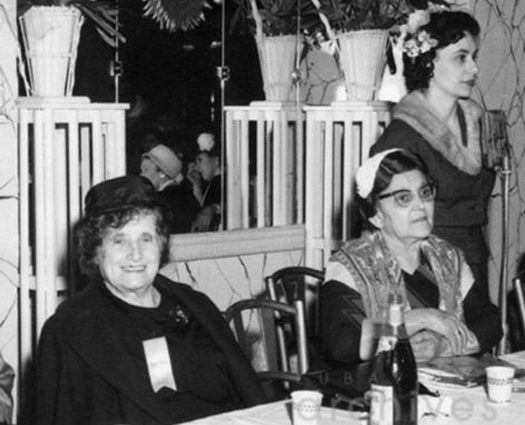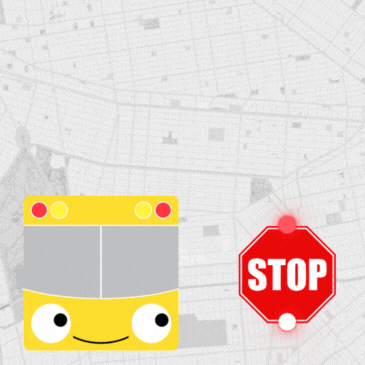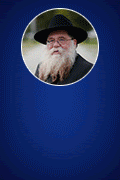
Weekly Story: The Farbrengens For Bnei HaYeshivos On Chol Hamoed Sukkos
by Rabbi Sholom DovBer Avtzon
Being that in the week of Vov Tishrei, I did not write anything about Rebbetzin Chana’s petira, I decided to mention a few points this week.
As always, your feedback and comments are greatly appreciated and most welcomed.
Shortly after the Rebbe and Rebbetzin arrived in New York, the Frierdiker Rebbe instructed him to farbreng every Shabbos Mevorchim. Additionally, he was also encouraged to farbreng one day of Sukkos for talmidei hayeshivos (for young men (teenagers and above) who were learning in the various yeshivos).
The Rebbe chose to farbreng on chol hamoed, so that people could drive in, as at that time very few yeshiva students lived in Crown Heights. Indeed, bochurim as well as married men from various yeshivos and neighborhoods would attend this farbrengen.
Quite often the Rebbe would base his thoughts on the unique custom of Simchas Beis Hashoeiva (the celebration that took place in the Beis Hamikdash in connection to the drawing of the water from the second through the seventh day of Sukkos. He would explain deeper thoughts of seemingly simple phrases which described the procedures of Simchas Beis Hashoieiva.
This special farbrengen began on Sukkos of 5702 (normally the first night of chol hamoed), and continued on through 5724.
Being that it wasn’t always on the same day of Chol Hamoed Sukkos, and to publicize it to a wider audience, a notice would be placed in the Tug Morgan Journal (a Yiddish newspaper) stating the day and time the farbrengen would be held. In that notice it was specifically noted that it was geared for Bnei Hayeshivos, and when one reads the hanachos (transcripts) of those farbrengens, notices that there was an emphasis on discussing a topic of Nigla.
However, after Rebbetzin Chana’s petira, it was public knowledge that there is a very strong possibility that the Rebbe would not be farbrengening this year at the Simchas Beis Hashoeiva, [and I was told that a public notice was placed in the newspaper to that effect].
Rabbi Ephraim Yalles, the Chief Rabbi of Philadelphia, who was extremely close to the Frierdiker Rebbe and our Rebbe, asked the Rebbe in a letter why he didn’t farbreng?
He wrote, the halacha is a mourner is not supposed to show signs of mourning on Shabbos and Yom Tov. Subsequently, he expressed his thought that after the Rebbe participated in this special farbrengen for over 20 years, not participating this year is a sign of mourning for his mother and the halacha is that on Yom Tov, which he believes also includes chol hamoed, one should not show any public signs of mourning.
The Rebbe responded to his question by noting two points.
A. Being that my father-in-law never participated in this farbrengen (gathering), that shows that it’s not something that has to be done. My participation until now was a novelty, and subsequently stopping to continue this novelty is not a sign of mourning.
B. Additionally, according to the Rama and other halachic authorities, there’s a big difference of showing signs of mourning on Shabbos and Yom Tov which is prohibited, while doing so on Chol Hamoed, does not have those same guidelines.
The Rebbe concluded, in order to avoid this question completely I intend not to attend this farbrengen next year as well, that way everyone would see that it was not related to my mother’s passing which would make me showing signs of a mourner on Chol Hamoed.
As a postscript the Rebbe never resumed this unique farbrengen. Evidently, it was an end of an era, and the beginning of a new era. However, he continued farbrengening on Shabbos Chol Hamoed, so obviously that as well as the farbrengens of Shmini Atzeres and Simchas Torah, maintained this farbrengen.
This was especially so from 5741 (1980) and onwards when the Rebbe began saying a sicha every night of Sukkos, discussing aspects of Simchas Beis Hashoeiva.
Additionally, as I wrote a few years ago, the Rebbe that in 5756 (1955) the Rebbe began teaching a new song early Simchas Torah morning. [Sometime after the farbrengen ended, Hakofos began, and shortly after Hakofos the Rebbe went upstairs to the Frierdiker Rebbe’s apartment, on the second floor, where he ate seudas Yom Tov, and then came down and taught the niggun.]
This continued for nine years, and in 5764, the Rebbe taught two niggunim, numbers nine and ten. The following year, he stopped. It was at least partially connected to his mother’s petira.
A Taste of Chassidus Mayim Rabim Torah Ohr 8C
As noted in previous posts, one of the basic principles of Chassidus is that the Torah is eternal, and it is teaching us a lesson no matter where and when we live. In this maamar, the Alter Rebbe is demonstrating how the story of the flood and Noach building an ark, which saved him, his family and all living creations, is not merely the story, but is a timeless lesson to all.
As the Rebbe quotes from the Baal Shem Tov, enter the Ark, is teaching us, enter the words of prayer and Torah study and that will protect each one of us from the negative influences the world creates.
As is known, Shir Hashirim (which is where the possuk of Mayim Rabim is mentioned (8:7), is a metaphor of the love that exists between the Jewish Nation and Hashem. Subsequently these words of Mayim Rabim, is a description of that love. Therefore, by understanding the deeper meaning of these words, we can learn valuable lessons on how we should serve Hashem.
The Possuk is telling us, that even though Hashem sent our Neshomos into this materialistic world, and by Divine will a person must do some sort of work in order earn an income to pay for their expenses, nevertheless, Shlomo Hamelech is informing us that the “turbulent waters” which represents a person’s preoccupation with earning a livelihood, and sometimes it’s to the extent that is not ending, nevertheless relentless pursuit is not able to disrupt the love a Jew has for Hashem.
But one may ask, why is it necessary for the Neshoma to come down to the Earth and deal with the turbulent Waters of earning your livelihood, while at the same time having to put in tremendous effort to remain faithful to Hashem? Wouldn’t it have been much easier for the Neshoma to have remained by Hashem’s throne, and we would have been basking in Hashem’s glory without any problems?
The Alter Rebbe explains (in this maamar) that if the Neshomos would have remained in the heavens they would have continued basking in Hashem’s glory, but by coming down into the Earth then the Neshomos have the ability to attain a closer and a more intimate connection to Hashem.
In other words, “the turbulent waters” is what elevates than the Neshoma. (Just as the ark was elevated 15 Amos (cubits) by the raging flood). If the soul would have not come down to the Earth, it would have been completely content remaining in front of hashem’s Glory. Subsequently, it would not have felt that it is lacking anything and therefore would not have been driven to go higher.
However, now that the Neshoma came down to the Earth and became involved in materialistic aspects and sometimes to the point that the person puts their life in danger, in order to earn a livelihood, the Neshoma realizes that this is not right. Being that Hashem created the world, that means it is Hashem who provides me with my livelihood and my profession is only the vessel or vehicle through which Hashem provides it.
The Neshoma concludes, why am I so occupied by thinking and scheming day and night about how to earn my livelihood, when I should focus on the greatness of G-dliness and connect myself to Hashem.
In other words, only when the Neshoma realizes that they are living a false life does it strive to come to the truth. At that point even when it returns to the original state of basking in Hashem’s glory, the Neshoma then realizes that being in the presence of Hashem’s glory is not the ultimate goal. Now that it is driven to be completely truthful, it recognizes that the true level is Hashem’s essence, and it sets its sight on connecting itself to Hashem’s essence.
According to this explanation the turbulent waters of earning a livelihood, in itself is not positive, rather it is the thing that causes the Neshoma to come to the above conclusion. The Alter Rebbe then explains it at a higher level. In this explanation it is those aspects of becoming invested in earning a livelihood that directly elevates the Neshoma, meaning that there is a positive aspect in it itself, and it is not merely a catalyst for good.
Chassidus explains, why is it that a person who is on top at the pinnacle of the Pyramid of life, has to come on to animals, vegetables and minerals in order to live? We see in life that the one on top sustains the one’s lower than them. Yet here the ones that are lower are sustaining the one that is above them!
But the reality is that the ones who we see, that they are on the bottom, the reality is that their source is much higher than the ones who are seemingly on top. Chassidus explains this by the fact that the higher one is the lower they can fall. So those that fell to the bottom it is evident that their source is higher.
Therefore, it is not the animal, bread or other things that sustain mankind, it is their source which is within them, which is higher than the source of the human body that sustains the human body.
In chassidic terminology, we are living in the world of Tikun. Simply speaking, that means that a person could have two separate (and even conflicting) feelings and they coexist in the person at the same time. However, in the higher world, which is called the world of Tohu, one attribute cannot coexist with the other.
The way Chassidus explains this phenomenon is, that in the world of Tohu, the lights are so powerful that they overwhelm the vessel, and the vessel shatters. However, in the world of Tikun the light is diminished, and therefore the vessels are able to contain that light.
When the vessels of Tohu shattered, those parts fell down into the world of Tikun, and the mission of bnei Yisroel is to find and elevate those 288 sparks of holiness back to their source.
So when a person finds those parts and utilizes them to serve Hashem the person is attaining a much greater level of godliness than is normally appearing in the world of Tikun.
This was seen by the flood, as the possuk states that the ark which Noach built to save himself, his family and all living creations (besides the fish) was elevated by the “destructive” waters. As the waters did not come merely to punish creation, for then a moment would have sufficed for Hashem to accomplish that. Rather it came to purify the world.
The Alter notes we see this concept by a baal Teshuva, one who repents on their misdeeds. As our sages teach us, “The place where a Baal Teshuva stands a complete Tzaddik cannot stand there.”
One of the reasons for this is that the Baal Teshuva is utilizing both souls, his G-dly one as well as his animalistic one to serve Hashem. Meaning he is serving Hashem with more vigor.
Rabbi Avtzon is a veteran mechanech and the author of numerous books on the Rebbeim and their chassidim. He is available to farbreng in your community and can be contacted at avtzonbooks@gmail.com.














